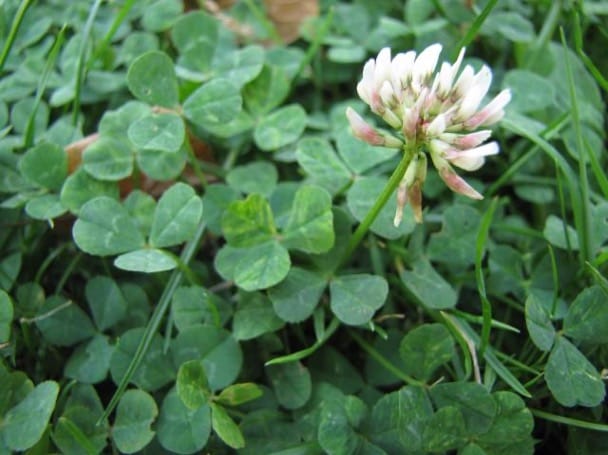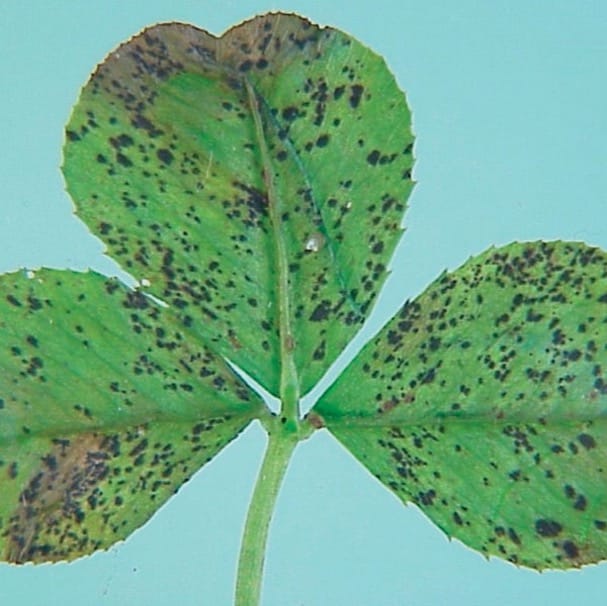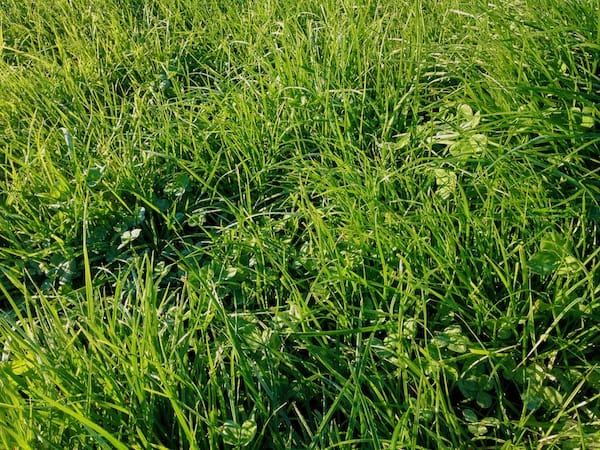If you are a progressive farmer and manage a clover pasture, you should read this article. It talks about some of the important diseases that can affect your clover pasture and reduce your yields. You maybe want to check out this article here on weed control methods. Anyhow back to the topic, you can read about the following here:
Advantages of clover pastures
What causes diseases in clover
Common viral diseases that affect clover pastures
Common fungal diseases that affect clover pastures
Managing healthy clover pastures

Advantages of clover pastures
Clover is a widely used forage legume. It can be grown alone or mixed in with stands of other grasses, in both rain fed as well as irrigated conditions.
It has a high nutritive value compared to most other tropical legumes. It also can be used as pasture, hay and silage. In addition to this, clover also fixes Nitrogen as well as prevents soil erosion.
What causes diseases in clover
However, clover is also susceptible to a few diseases are caused by strains of fungi and viruses.
Viruses are among the tiniest organisms. They do not have any cells and depends on other organisms for survival. On the other hand, fungi are slightly bigger, more complex organisms.
The vast majority of these microscopic organisms are harmless. But some of them harm your clover pasture. Let’s find out more about these harmful ones.
Common fungal diseases that affect clover pastures
1. Clover rot
2. Grey mould
3. Wart disease
4. Common leaf spot
5. Pepper spot
6. Black or sooty blotch

1. Clover rot
Clover rot is caused by the fungus Sclerotinia trifoliorum. Outbreaks of clover rot are most frequent in irrigated pastures. It can significantly affect clover yields. Young seedlings are particularly susceptible.
This fungus causes tiny brown spots on the leaves. Over time these spots join together and the leaf withers off. The fungus can also infect the stems and shoots, eventually killing the plant.
A severely affected patch of pasture can quickly turn into a mass of rotting plant material. Dead leaves and stems can be covered by small, black, irregular, dormant resting bodies called sclerotia. This can lie dormant for up to 5 years and re-infest a clover field when conditions are right.
2. Grey mould
Grey mould is caused by the fungus Botrytis cinerea. It is a minor disease of white clover which affects scattered plants, but never a whole stand.
Cool moist conditions and lush growth, favour the development of grey mould. They are typically transmitted by wind. This fungus can also survive on infected plant debris, seed and as resting bodies (sclerotia) in the soil.
3. Wart disease
Wart disease is caused by the fungus Physoderma trifolii when excessive moisture is present. The disease usually occurs in wet areas, such as river flats or in poorly drained soils.
Small swellings (or galls) develop on all parts of the plant. The galls eventually join and causes twisted leaves, stems and flowers.
Under excessively wet conditions the galls decay and the resting spores release zoospores which move to infect nearby plants.
4. Common leaf spot
Common leaf spot is caused by the fungus Pseudopeziza trifolii. As the name suggests, it is a common disease of pasture legumes, occurring in late autumn and winter.
The disease does not kill plants, and rarely causes serious economic losses. When severe however, plants can be defoliated, reducing hay quality and yield.
Round, dark spots occur across the upper leaf surface. Infected leaves turn yellow, then brown and finally wither to the ground. Elongated spots can also occur on the affected stems.
The fungus carries over on infected plant debris on the soil surface. Infected crop debris and spores can propagate via wind over short distances.
5. Pepper spot
Pepper spot is caused by the fungus Leptosphaerulina trifolii. It is quite similar to the common leaf spot disease and occurs in clover between late autumn and early spring, as it prefers cool moist weather conditions.
It usually does not cause serious herbage losses. However, when severe, this disease can reduce both yield and quality, especially crude protein content.
Affected plants develop round, dark spots on the leaves, stems and runners. The spots are usually confined to the upper leaf surface, and may be so numerous that the leaves appear covered in soot. Severe infections can cause the leaves to cup, turn brown and die prematurely.
Both infected plant debris and seed can further propagate this disease.
Keep pasture short; this will inhibit disease development by lowering humidity within the stand, and reducing the level of infected material which could carry-over the disease from season to season.
6. Black or sooty blotch
Black or sooty blotch, is caused by the fungus Cymadothea trifolii. It is a relatively common disease of pasture legumes, but rarely causes losses. This disease is most prevalent in low, wet areas especially during late summer and early autumn.
Severe cases may affect yields as it stunts and partially defoliates plants. In some cases, horses, cattle, and sheep have been reported to have shown toxic effects and deaths after grazing infected stands.
Infected plants develop dark-green to black spots on the undersides of the leaves. Infected leaves gradually dry, become brown, and wither.
The fungus carries over on infected plant debris and has been reported to survive in the soil for up to five years. Spores are spread by wind and rain splash.
Keeping pastures short will help inhibit disease development by lowering humidity within the stand, and reducing the level of infected material which could act as a carry-over source.
Managing healthy clover pastures
In general, viral diseases can be reduced by selecting good seed and resistant cultivars. On the other hand, fungal diseases can be limited to a great extent by reducing humidity and excessive moisture.
Close grazing of clover paddocks can reduce humidity as well as ensure good regrowth. Practicing crop rotations every three to five years will ensure good soil health as well as reduce incidences of disease.
In case of a fungal disease outbreak, the fungi can survive for up to five years in a dormant state known as sclerotia. But deep ploughing can help you bury the sclerotia and reduce chances of a re-infestation.
Good irrigation management will also help you maintain optimal growing conditions that prevent disease attacks and maintain healthy soil. It can help you prevent water logging and dry conditions.

There is an article here on keeping your farm biosecure for containing, managing, and stopping the spread of weeds, pests and diseases. It's a topic that is perhaps as important as ever. In saying so, I hope you found this article useful. If so please do share this with other farmers you know and if you have any questions, please let me know in the comments below.
Happy farming!
- The Dedicated Team of Pasture.io, 2020-02-26
